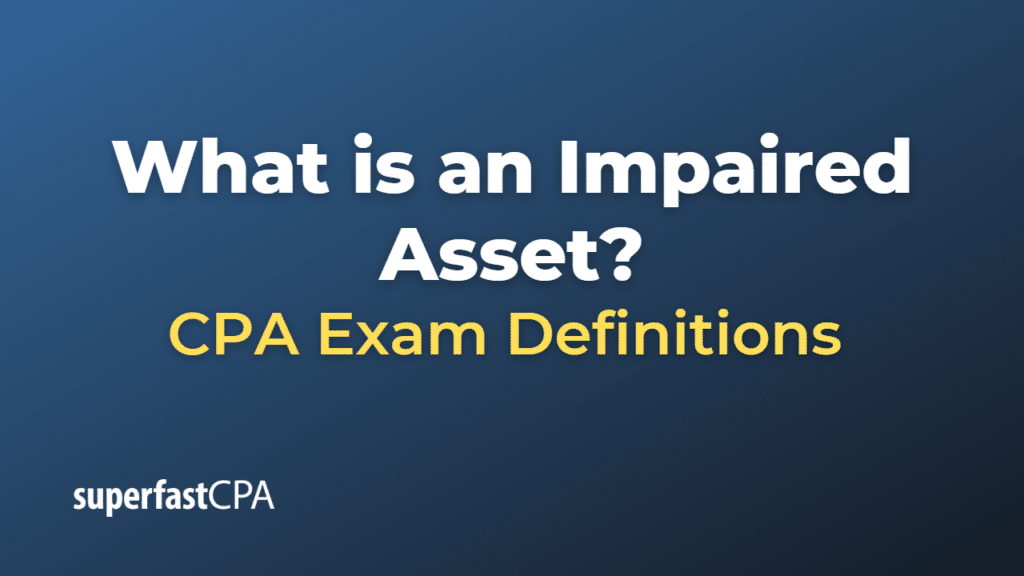Impaired Asset
An impaired asset is a company’s asset that has a market value less than the value listed on the company’s balance sheet.
Accounts that are likely to be written down include the company’s goodwill, accounts receivable, and long-term assets, because their values are most susceptible to conditions that may cause impairments, such as changes in market demand or poor management decisions.
An impairment occurs when a sudden and large decline in the fair value of an asset below its carrying amount causes the expectation that the asset will not be able to generate future cash flows sufficient to recover the carrying amount of the asset.
Impairment can occur as the result of an unusual or one-time event, such as a change in legal or economic conditions, a decline in market value, or damage to the asset.
Impairment leads to a write-down, which means reducing the recorded cost of the asset on the balance sheet and taking an impairment charge (expense) on the income statement. This reduction reflects the permanent decrease in the asset’s value.
In accordance with International Financial Reporting Standards (IFRS) and US Generally Accepted Accounting Principles (GAAP), companies are required to test assets annually for impairment, and any impairment losses must be reported in the financial statements.
Example of an Impaired Asset
Let’s consider an example involving a manufacturing company.
Suppose ABC Manufacturing Co. bought a machine five years ago for $1 million. This machine, after five years of depreciation, is still carried on their books at $600,000. However, due to technological advances, similar new machines are now being sold for $400,000. This causes ABC to question whether their machine is still worth the $600,000 book value.
In response to this concern, ABC conducts an impairment test. They evaluate the future cash flows that the machine is expected to generate. After their analysis, they determine that the machine’s expected future cash flows are $350,000.
Since the expected future cash flows of $350,000 are less than the carrying amount of $600,000, the machine is considered an impaired asset. ABC will then have to write down the value of the machine to its recoverable amount. The recoverable amount is the higher of the asset’s fair value less cost to sell and its value in use. In this case, let’s assume it’s the $350,000.
Therefore, ABC would recognize an impairment loss of $250,000 ($600,000 – $350,000) on their income statement. Also, they would reduce the carrying value of the machine on their balance sheet from $600,000 to $350,000.
Remember, this is a simplified example. The actual process of testing for and measuring impairment can be complex and requires significant judgment.













